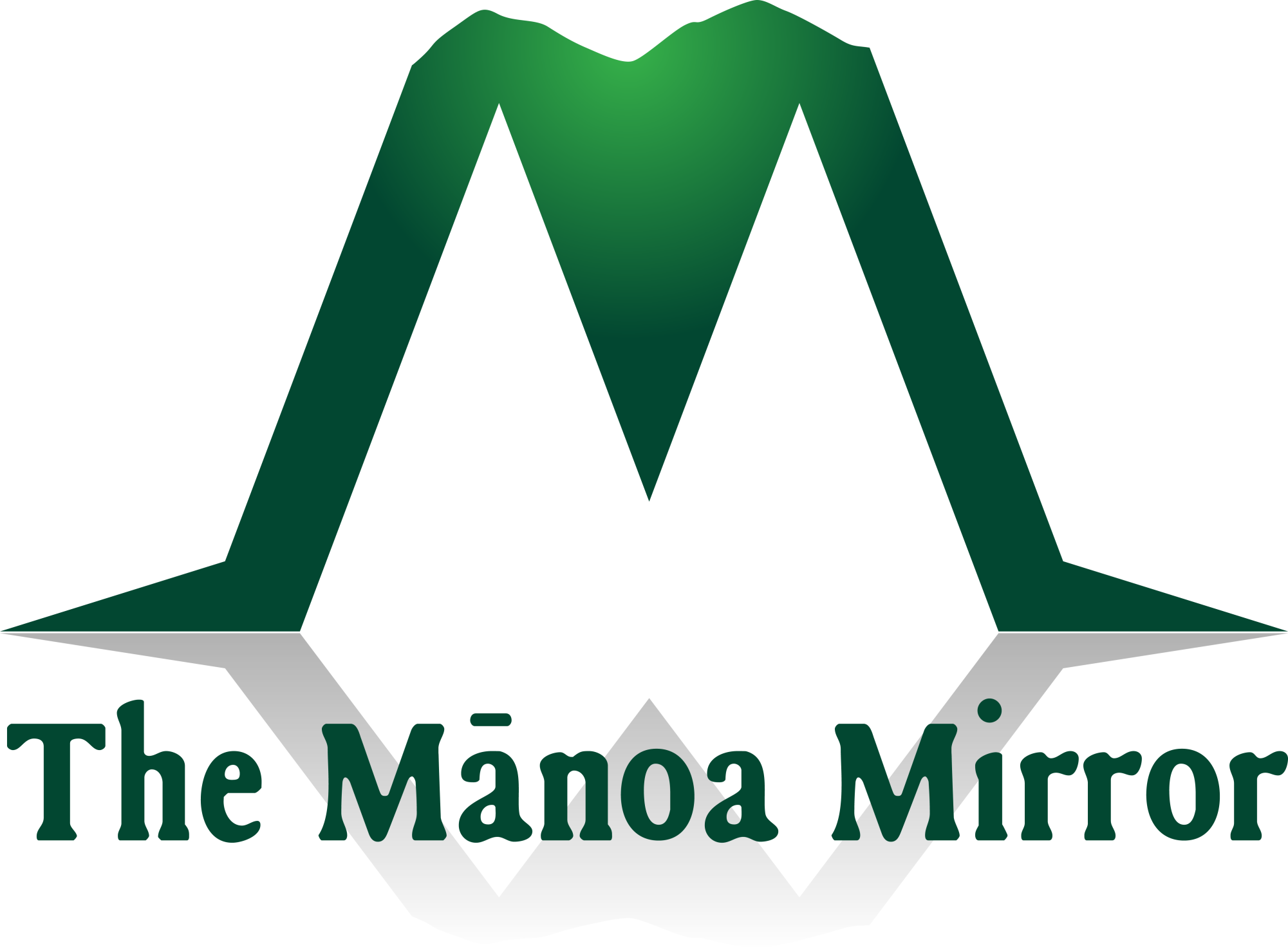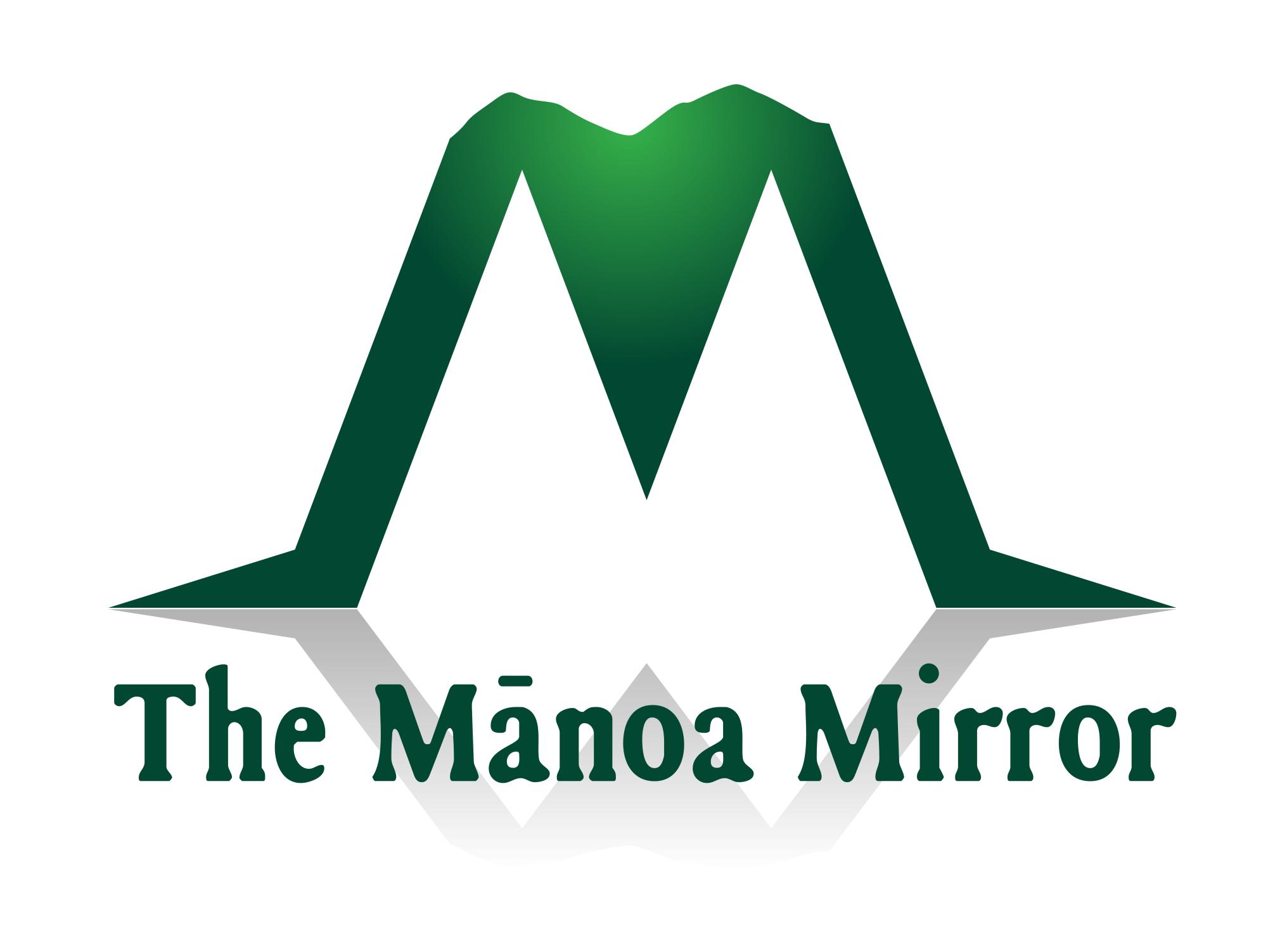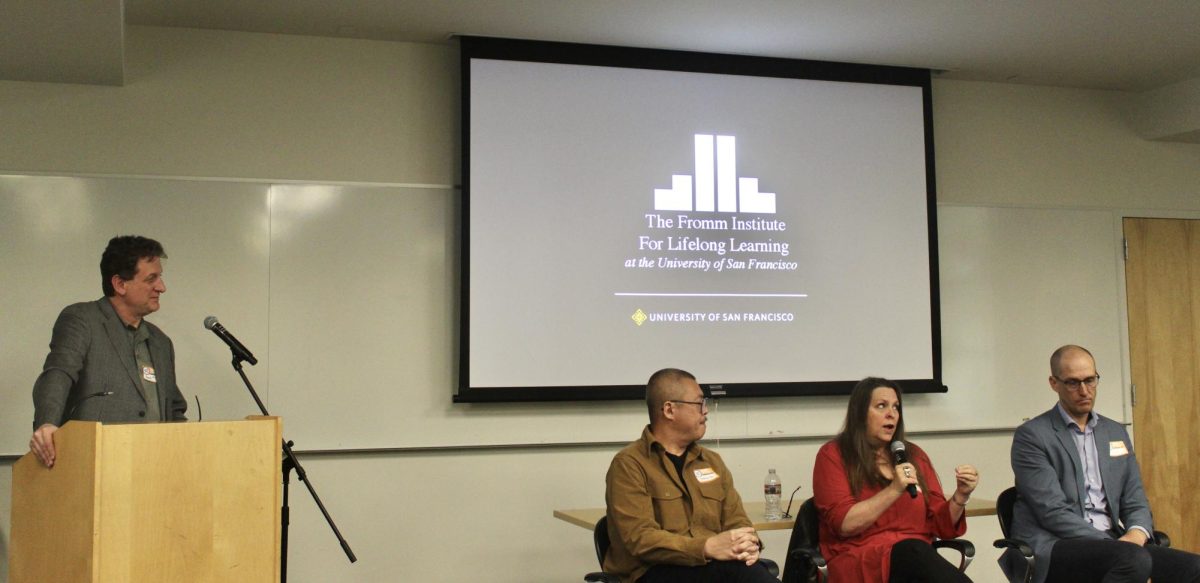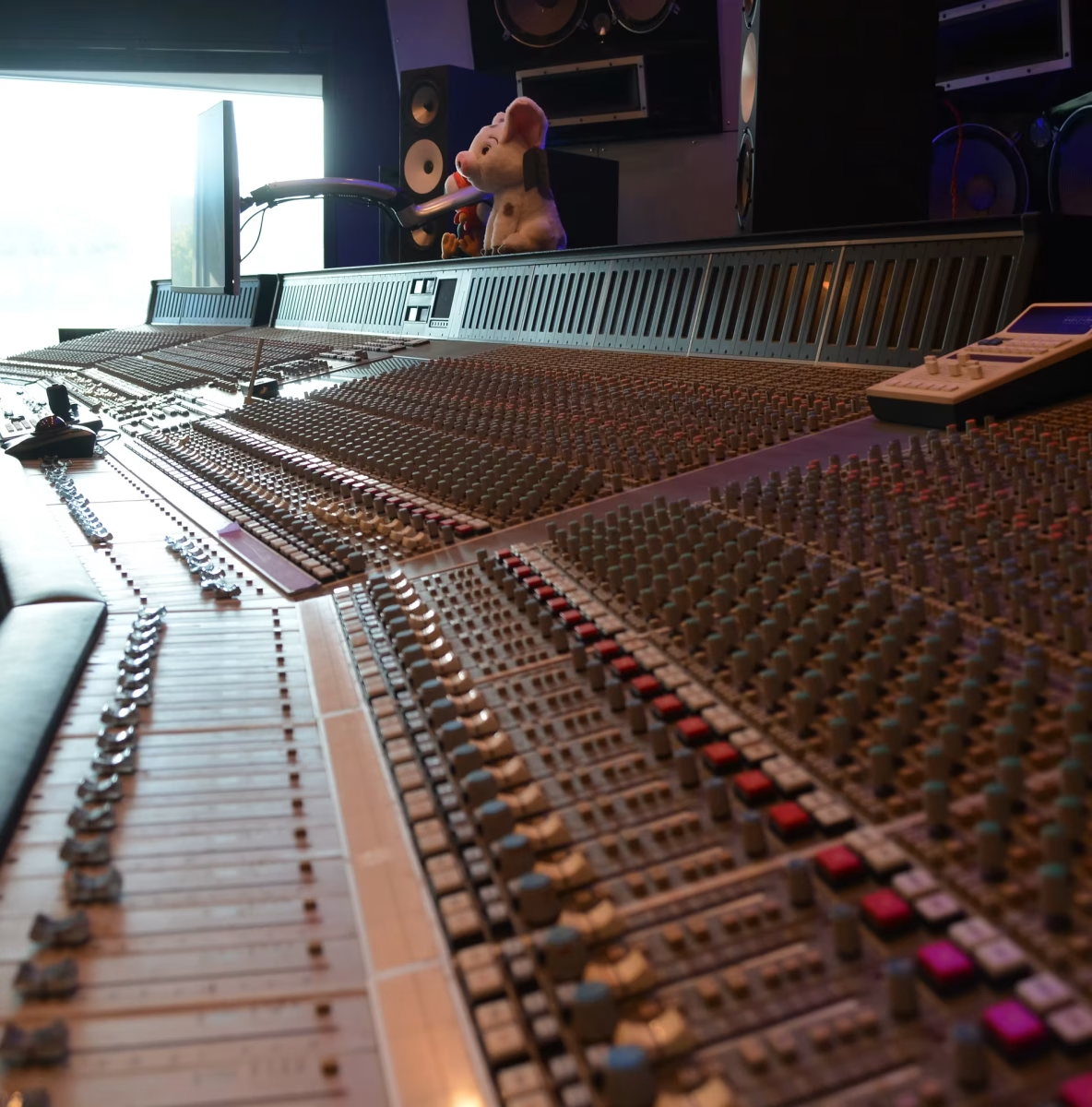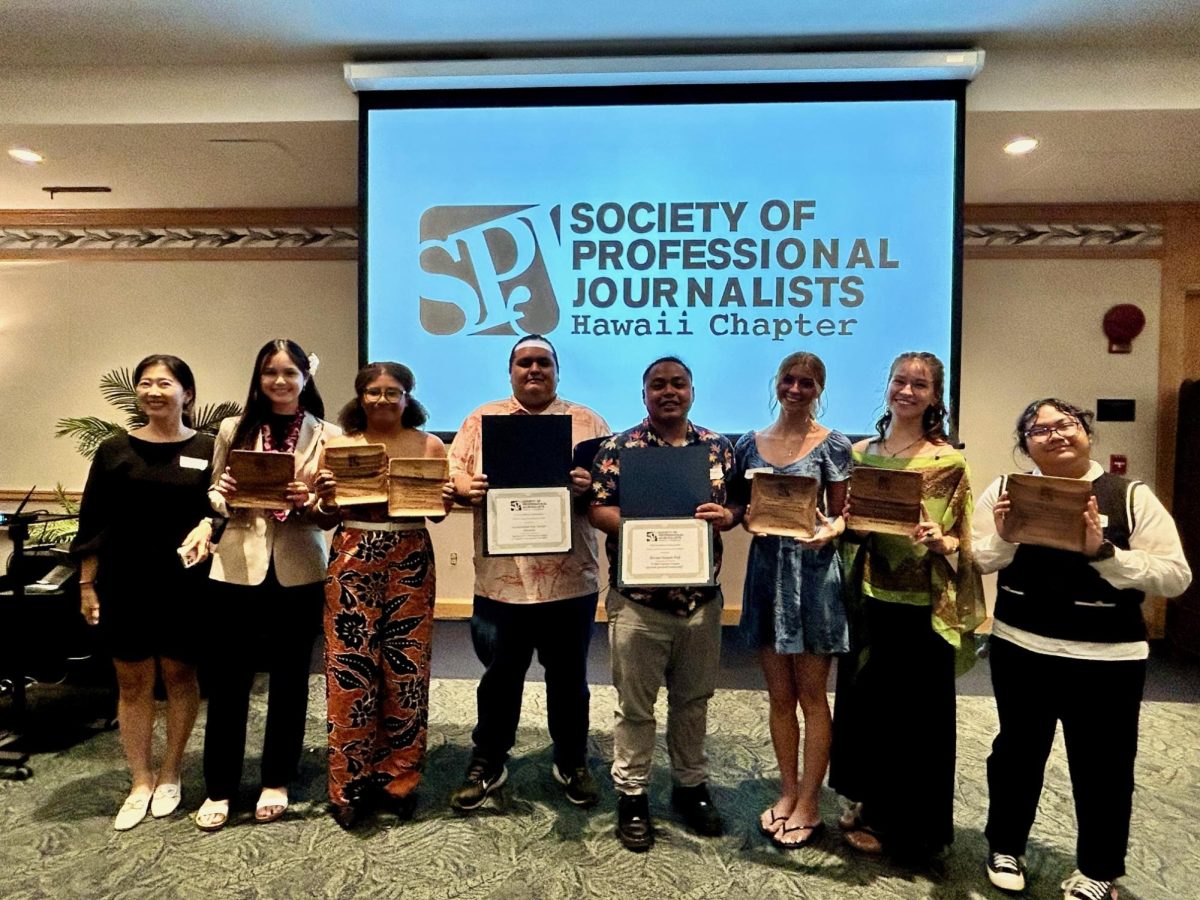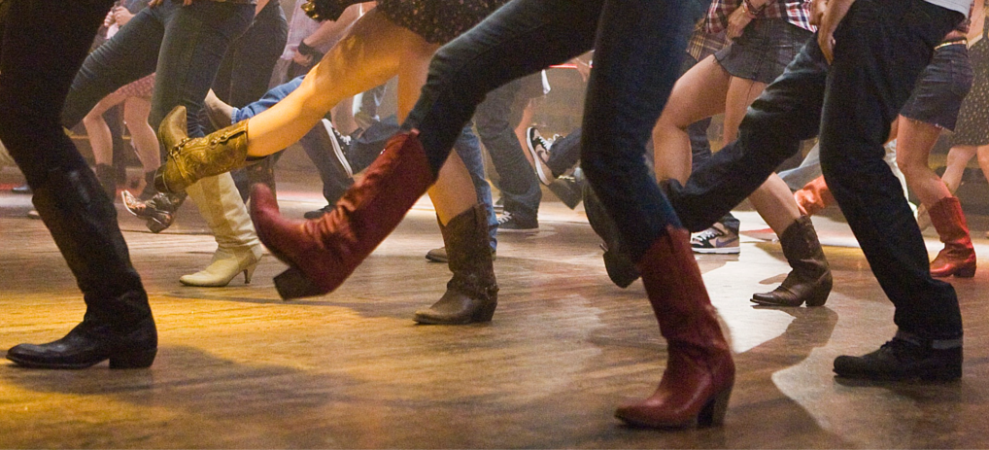While the topical theme of this year’s Society of Professional Journalists (SPJ) Region 11 Conference was “Reporting in Hostile Times,” many workshops either included or focused on the impact of artificial intelligence, a technology that is making waves in the field of journalism.
Co-hosted by SPJ NorCal and the University of San Francisco’s (USF) Media Studies Department from May 2 to May 3, the conference highlighted a variety of journalistic aspects, from investigative reporting to ensuring diverse coverage. But participants also explored a hidden topic: how to leverage AI in an industry that is evolving at a rapid pace.
For student journalists breaking into a new media landscape, the insights on AI offered were not only fascinating, but also incredibly useful, as technology often advances faster than formal education can keep up.
“AI Ethics and Literacy for Journalists” was one of the conference’s first workshops, presented by Andy Lee Roth, a Reynolds Journalism Institute fellow, and Dorothy Kidd, a USF Media Studies professor.
Effectively understanding AI is quickly becoming a significant component of the journalist’s skill set, but ethics remain a large concern.
Roth serves as Editor-at-Large for Project Censored, an organization that sheds light on news censorship while promoting media literacy, and the Project Lead for Algorithmic Literacy for Journalists. His presentation introduced both of these online-accessible resources that emphasize ethical journalism.
With AI becoming ubiquitous, Roth said, “I think the opportunities for reporting in a meaningful way that there will be an audience eager to understand is a great encouragement.”
He encouraged journalists to expand their reporting to consider how AI is shifting the balance of power, to keep corporations accountable for the effects of AI on everyday life, to better frame stories about AI with regard to the stakes, not the arms-race-style emphasis on speed of innovations.
Ending with a call to action, Roth outlined two key takeaways: 1) That journalists have vital roles in helping public understand promise, limitations, and risks of algorithms and everyday lives, and 2) That algorithmic literacy for journalists can help revitalize public trust in journalism.
Kidd continued the workshop by emphasizing the missing perspectives in current AI coverage, such as smaller independent companies and the workers themselves instead of just the tech industry giants, environmental impacts, and privacy violations. Overall, she advocated for more comprehensive, collaborative journalism.
The Paris Charter on Artificial Intelligence in the Public Interest, an international agreement for openness, accountability, and transparency regarding AI—signed by ten countries, the U.S. not included—and the community-based Distributed AI Research Institute are notable efforts that Kidd directed attention to.
The conference also featured AI assets for journalists like Pinpoint, one of the technologies overviewed in the Google tools training. Part of Google’s Journalist Studio, Pinpoint can transcribe audio and video as well as structure large sets of data from a variety of document types.
The best part is that, unlike Otter.ai, Pinpoint has no upload limit. Just be sure to use a personal account, as the settings for hawaii.edu email accounts do not grant access.
On day two of the conference, UH Mānoa journalism professor Brett Oppegaard moderated the workshop “Harnessing AI innovations in newsrooms: What’s Working, What Isn’t, and What’s Coming Next.”
Derrick Ho, editorial director of AI initiatives for Hearst Newspapers, Kat Rowlands, Bay City News owner and publisher, and Ryan Sabalow, CalMatters Digital Democracy reporter shared their experiences with AI in the profession.
Rowland’s team experimented with AI to create comprehensive local election coverage—a feat that has saved them countless hours, filled a gap in news coverage, and was actually sparked by the innovation of an intern who has since been hired full-time as a result of her hard work on this project.
Transcribing and flagging key words in public meetings, tracking how local legislators vote, and providing feedback on articles are other ways that the panelists have found AI to be incredibly helpful in their newsrooms.
At the same time, they underscored human oversight and transparency.
“I just really like the fact that they were local news and, you know, doing it on a small scale, and trying to incorporate it into their newsrooms,” said UC Berkeley journalism graduate student Shreya Menon, “and I thought that was super interesting.”
Menon, whose journalistic endeavors have included open-source investigations, documentaries, podcasts, and work at the Berkeley Human Rights Center, was excited for this specific workshop to enhance her understanding and get commentary for her research into how AI can combat misinformation and disinformation. AI has also been especially useful for Menon in terms of translating information across multiple languages.
Menon’s advice on AI to fellow student journalists: “Don’t be scared of it.”
